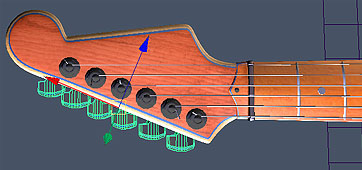★CGRU★
|
|
★CGRU★ |
|
| Introduction | Features | Installation | Customization | Download |
Features and usage:Quick start: 
To use the tool you first need to select something you would like to transform. These are objects (transform nodes), components (any type of components) or both together. With this done you next use the "Take reference" button in the UI, a hotkey/marking menu/shelf or menu item in the "Transformation tools" menu. It all depends on how you've customized the tool. With "Take reference" applied you are now asked to select the desired component/object for the reference. This can be poly/subd/nurbs component/s or any object/s (see reference types). After you will select the desired reference, the tool will change tool options you will be ready to work in the desired local space. You can move, rotate, scale, change pivot's position and snap. The transformation is applied to "LocalToolReference" object which gets selected each time, you can also set transformation attributes to it via the channelBox. The tools stays active till the first selection change, i.e. you've selected another component/object to work with. You can also end the tool by ctrl pressing the "Take reference" button on the UI or shift pressing the HUD button in maya 7. But you will rarely need to end the tool with that. |
|
Features and option in detail:
|
|
Reference types:
|
|
Tips:
|
|
Limitations: Due to the tool's slightly "faked" nature it has a couple of limitations:
|
Copyrigt �2005, Henry Korol
Last updated: 04.09.05
| SourceForge.net Project |
★CGRU★ |
Раздел на форуме CGTALK.RU |